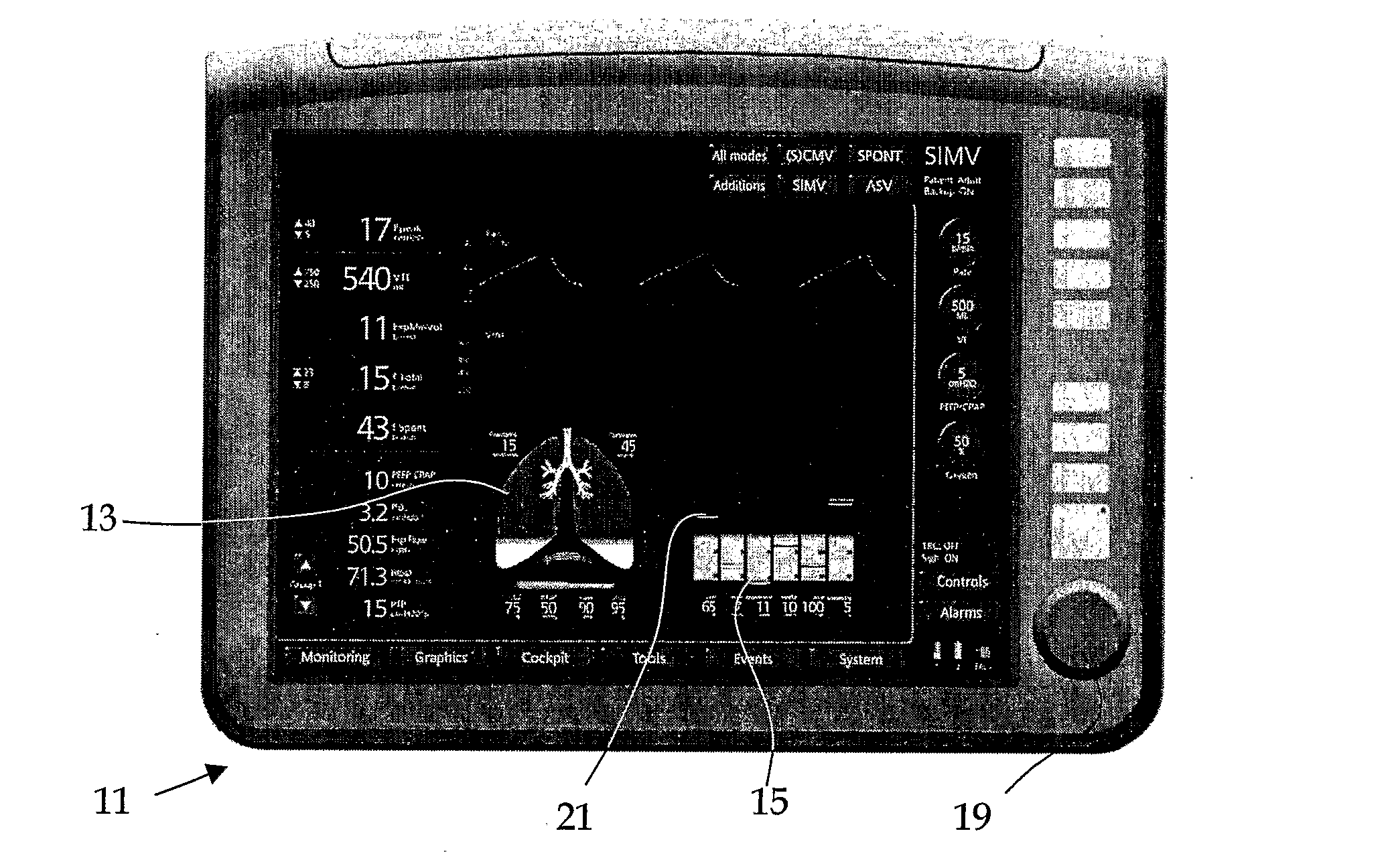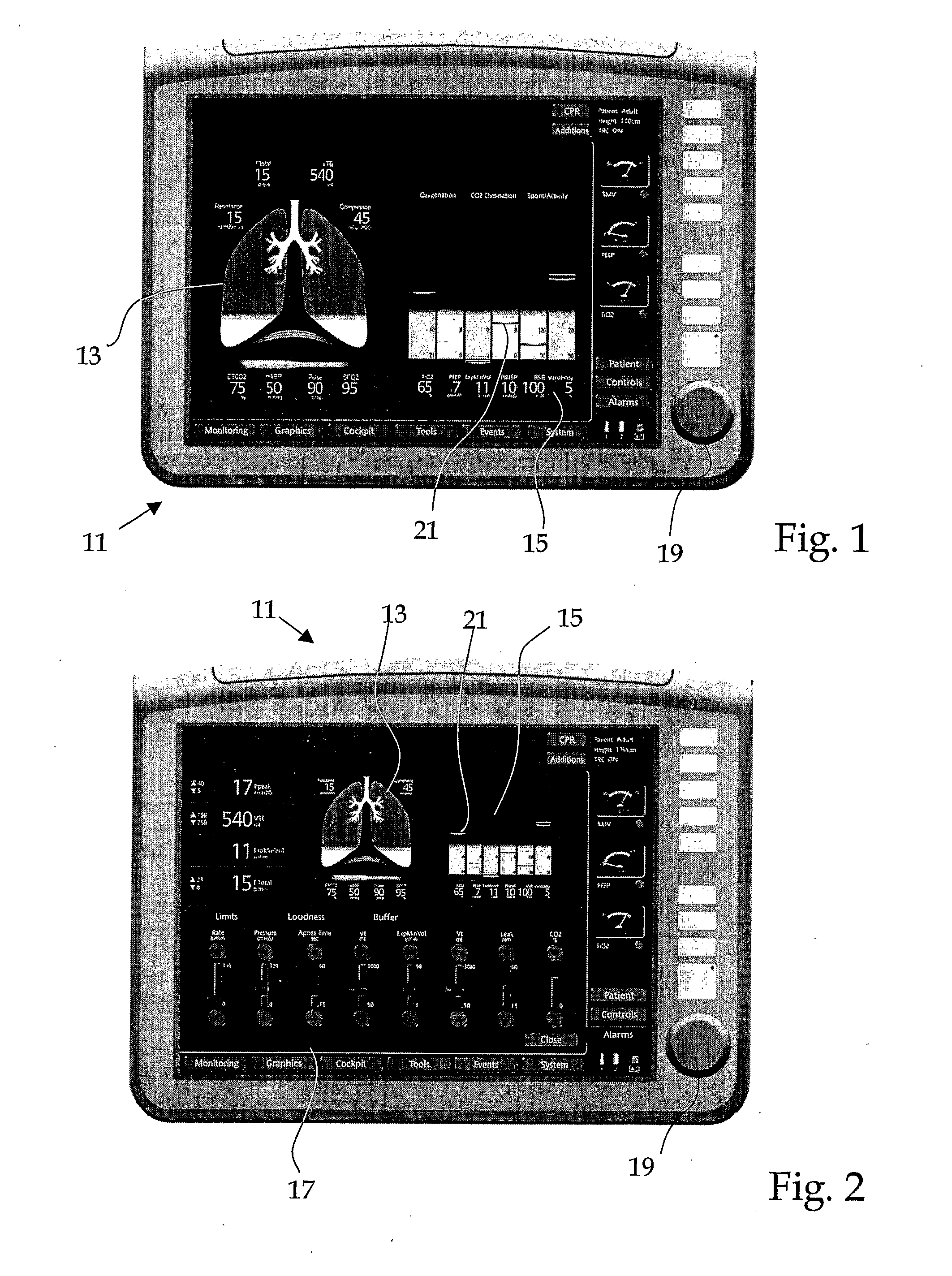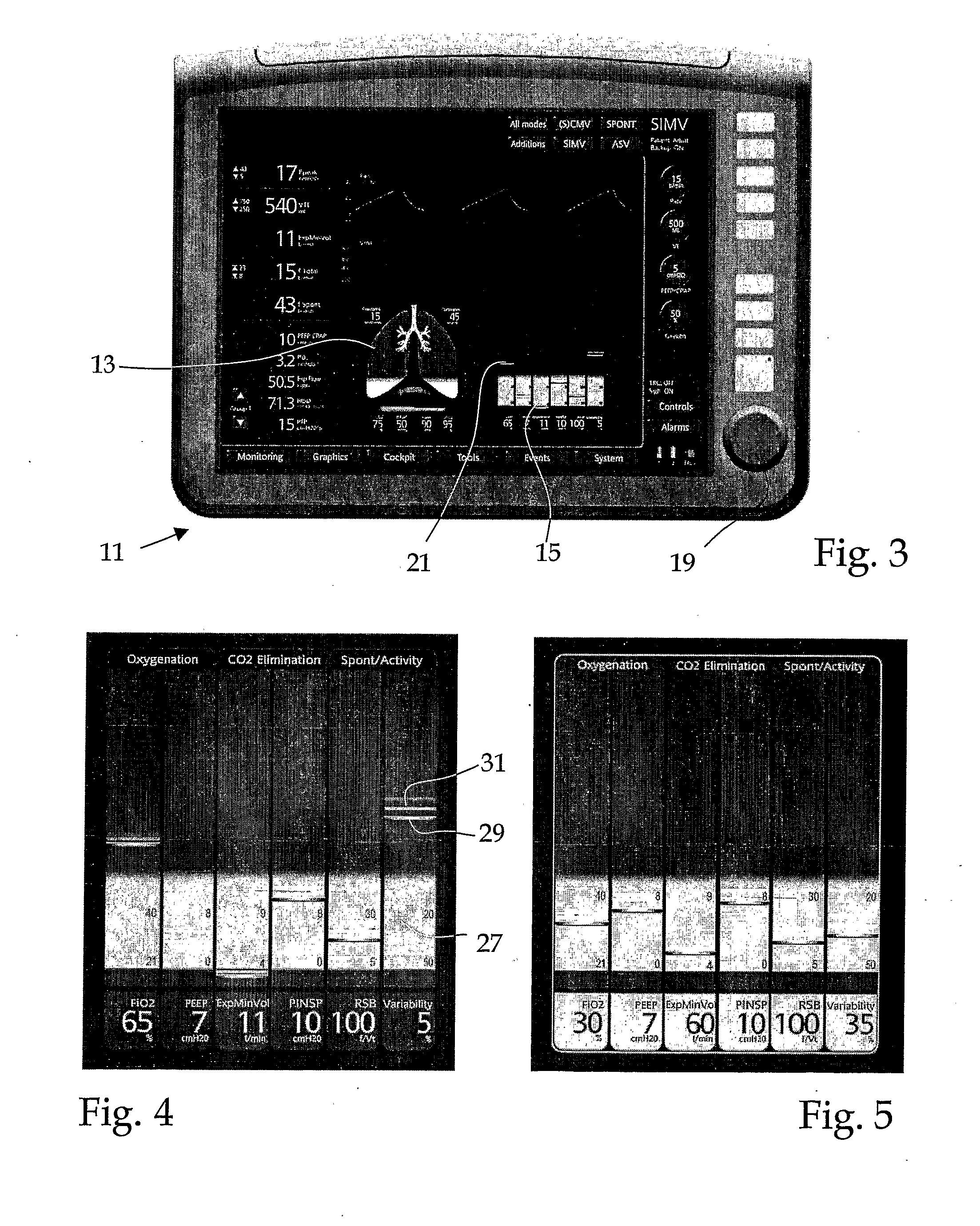Method and a device for simplifying a diagnostic assessment of a mechanically ventilated patient
a technology for mechanical ventilation and diagnostic assessment, which is applied in the field of methods and devices for simplifying the diagnostic assessment of mechanical ventilation patients, can solve the problems that mechanical ventilation may damage the lungs of patients, and studies have yet to show whether the representation remains intuitively perceptible and usable, so as to simplify the diagnostic assessment and simplify the parameter assessmen
- Summary
- Abstract
- Description
- Claims
- Application Information
AI Technical Summary
Benefits of technology
Problems solved by technology
Method used
Image
Examples
Embodiment Construction
REPRESENTED IN THE FIGURES
[0102]The screens 11 represented in the FIGS. 1 to 3 show representations generated with the method according to the invention. These representations comprise a first region 13 with patient parameters which contains an element reminiscent of an organ, and a region 15 with apparatus parameters which has a scale bar. The scales of this scale bar are different. Readings and apparatus settings are displayed on these scales with a positionally changing component 21. In FIG. 1, these two regions13 and 15 practically take up the complete screen. In FIG. 3 they are squeezed together in the upper half of the screen, since a window is opened around the lower region. Such a window may be selected and opened with the selection button 19, whereupon the representation according to FIG. 1 changes into a representation according to FIG. 2. In FIG. 3, the representation of both regions mentioned above only takes up a part region of the screen, whilst an upper part region pr...
PUM
 Login to View More
Login to View More Abstract
Description
Claims
Application Information
 Login to View More
Login to View More - R&D
- Intellectual Property
- Life Sciences
- Materials
- Tech Scout
- Unparalleled Data Quality
- Higher Quality Content
- 60% Fewer Hallucinations
Browse by: Latest US Patents, China's latest patents, Technical Efficacy Thesaurus, Application Domain, Technology Topic, Popular Technical Reports.
© 2025 PatSnap. All rights reserved.Legal|Privacy policy|Modern Slavery Act Transparency Statement|Sitemap|About US| Contact US: help@patsnap.com



